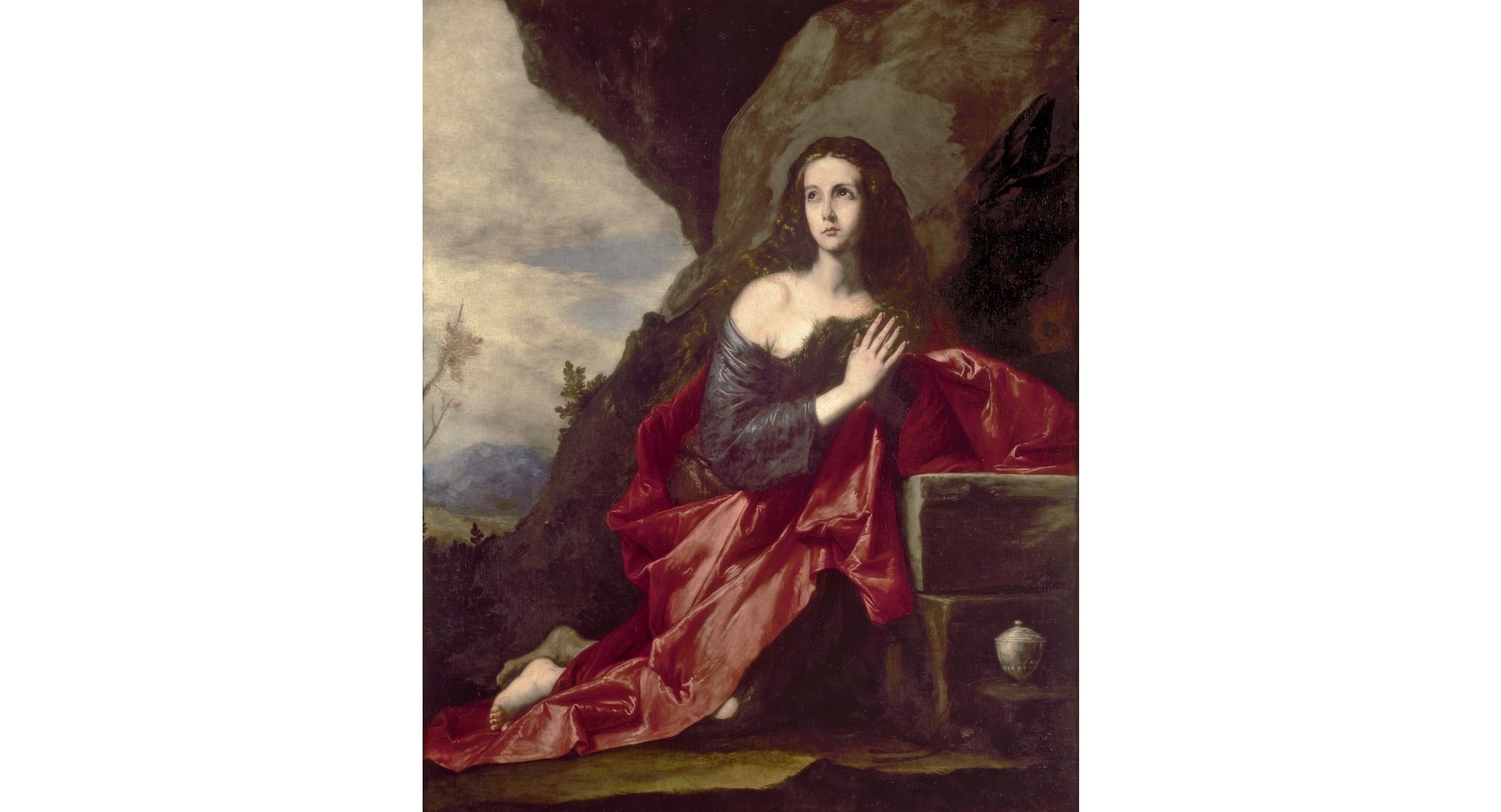+39 0669887260 | info@wucwo.org | Contact us
Art for Mediatation - July 2023
 José de Ribera (Játiva, Valencia 1591 – Napoli 1652), Penitent Magdalene, 1641, oil on canvas, cm 182 x 149, Madrid, Prado Museum.
José de Ribera (Játiva, Valencia 1591 – Napoli 1652), Penitent Magdalene, 1641, oil on canvas, cm 182 x 149, Madrid, Prado Museum.
Month of July.
New Testament women: Mary Magdalene.
Afterward, he journeyed from one town and village to another, preaching and proclaiming the good news of the kingdom of God. Accompanying him were the Twelve and some women who had been cured of evil spirits and infirmities, Mary, called Magdalene, from whom seven demons had gone out, Joanna, the wife of Herod's steward Chuza, Susanna, and many others who provided for them out of their resources. (Lk 8, 1-3)
About Mary, originally from Magdala, a small fishing village on the western shore of Lake Tiberias, we are told very few things in the Gospel. The most important one is narrated at the end of all four Gospels, when they tell us that she was present at the condemnation and death of Jesus and, most importantly, that she was witness to His resurrection.
The worship of this great disciple and saint spread rapidly throughout the Church and there are numerous artistic testimonies about her. Generally, she is represented as “mirofora” – one of the women who, on Easter morning, carried the oils to anoint the body of Jesus – or as “Addolorata” (sorrowful) at the foot of the cross – often with the arms outstretched – or as “called by name” by risen Jesus in the garden (it is the so-called noli me tangere, “touch me not” mentioned in the chapter 20 of the John’s Gospel).
In this beautiful painting of the Spanish painter José de Ribera, Mary appears to us as “penitent”. According to an ancient tradition, the Magdalene withdrew to the land of Ephesus and lived in the desert. This penitential aspect of the saints became quite popular that in the XVII century, to the point that, for example, the person who commissioned to the Spanish painter – who had been working in Naples for several years – the painting that we are examining, commissioned Ribera other 3 more paintings representing 3 other saints withdrawn in desertic environments: Saint Bartholomew, Saint Mary of Egypt, and St. John the Baptist.
Now, if we look at the beautiful painting, there are some elements that strike us.
First of all, we notice the landscape dominated by the rock, under which there is Mary, and immersed in the grey of a sky that does not seem to illuminate, but rather, arouses feelings of silence and loneliness (and, moreover, we see no trace of human activity, only fields, plants, and mountains).
Mary, then, announces herself to us through an attribute that qualifies her: at the bottom right, we see a beautiful metal vase, precisely the container of oils that she was carrying on Easter morning when she went to the sepulchre where they buried Jesus.
And the same Mary has indeed an attitude and a pose typical of penitents (she is on her knees, with bare feet, the hands joined, the long hair down, and the gaze turned up towards God); but however, she expresses a great dignity that finds concreteness in the beautiful red cloak that she wears. The penitence, therefore, is not something that induces humanity towards a primitive or almost animal state, but is a practice that, by bringing us closer to God, gives fullness to life itself.
Let us be guided by Mary Magdalene: she will certainly guide us to Jesus, because she met him, she recognised him, and she believed his word
A new morning is born,
the first day of the week.
Watch my joy shine,
it is Jesus rising.
Hallelujah, hallelujah!
The tomb is empty and no more guards,
only the angels look at me,
sing new songs,
it is Jesus who makes us live.
Hallelujah, hallelujah!
The garden is bright and calm,
there is the Lord speaking,
I thought I saw the gardener,
but it’s Jesus, our light.
Hallelujah, hallelujah!
He sends me to you, my brothers,
He already precedes us,
Listen, dear friends,
it is Jesus who calls us.
Hallelujah, hallelujah!
We know that our old self was crucified with him, so that our sinful body might be done away with, that we might no longer be in slavery to sin. For a dead person has been absolved from sin. If, then, we have died with Christ, we believe that we shall also live with him. We know that Christ, raised from the dead, dies no more; death no longer has power over him. As to his death, he died to sin once and for all; as to his life, he lives for God. Consequently, you too must think of yourselves as (being) dead to sin and living for God in Christ Jesus. (Romans 6, 6-11)
(Contribution by Vito Pongolini)